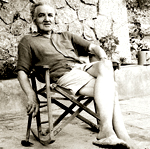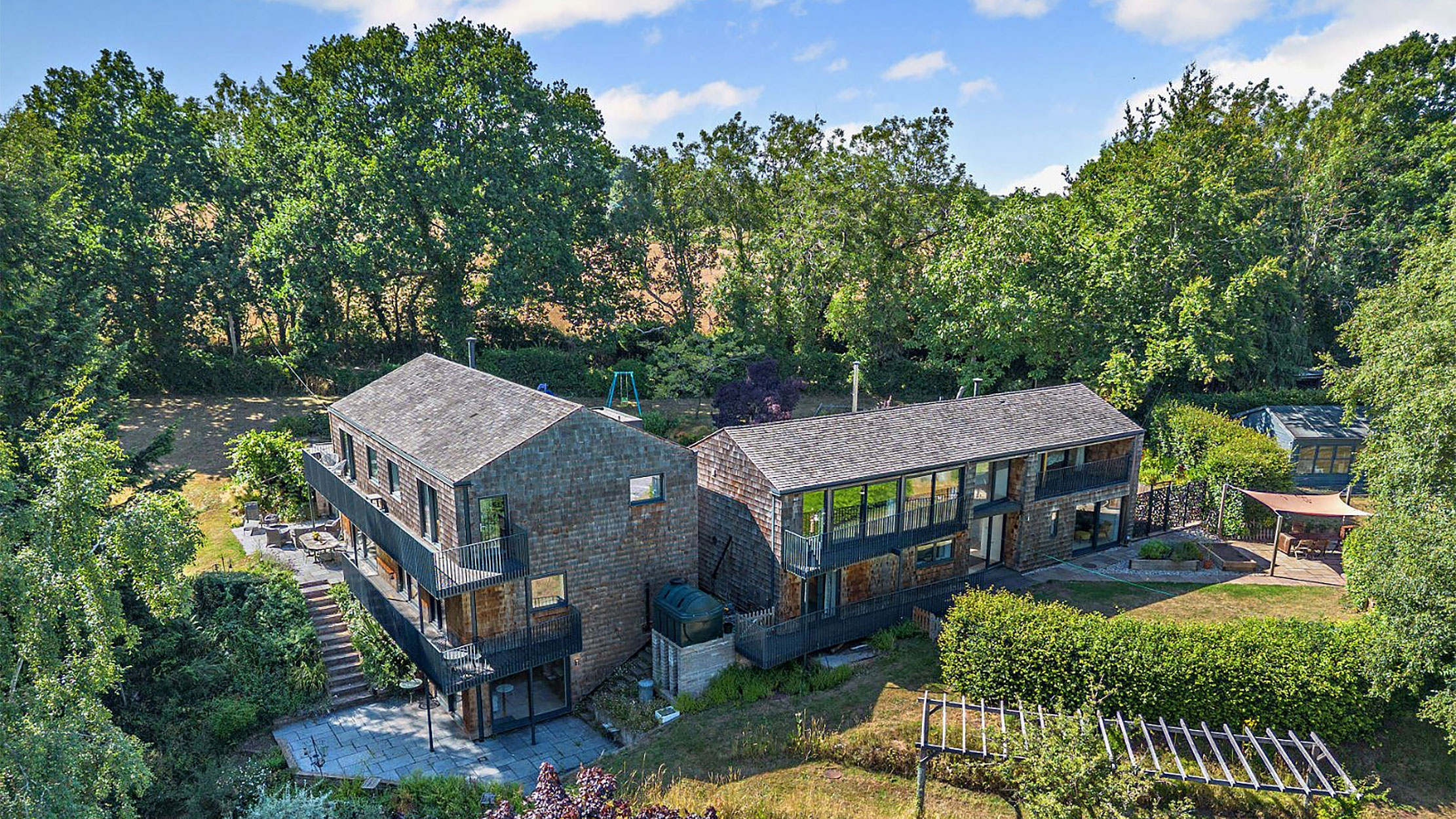Robert Graves Museum
The poet, Robert Graves, moved to Mallorca in 1929 where he set up home in the village of Deia. His house has now been opened to the public as a museum.


A more charming memorial to a giant of English literature is hard to imagine. The renowned poet and writer Robert Graves came to Deyá in 1929, building himself a typical stone house on, as he put it, the best site in the village. There he lived for the rest of his life, with a rather unwelcome interruption of 10 years prompted by the Spanish Civil War. He came for 'sun, sea, mountains and spring water, shady trees, no politics and a few civilised luxuries such as electric light and a bus service to Palma', not to mention good neighbours and not too great a distance from the Greenwich Meridian. Graves was seeking not just a simple life, but a good one, attracted by a cost of living a quarter of that in England and an abundance of the Mediterranean produce we take for granted today. He enthused about 'a very sound heady wine from the village of Binissalem' and the 'sequence of oranges, loquats, cherries, apricots, peaches, plums, strawberries, apples, pears, first figs, grapes, figs, pomegranates and oranges again'.
Far from leading a lotus existence, he set himself a disciplined schedule, writing six hours a day almost every day of the year, completing some 80 books of poetry and prose from his desk in Deyá (including I, Claudius) as well a continuous stream of lucid articles and reviews for a host of newspapers, magazines and reviews. All these were dispatched by post, although, in extremis, an obituary could go by telegram from the local post office. The prelude to Graves's move was the dramatic climax of the increasingly tense ménage a trois at his home in St Peter's Square, then known as 'Free Love Corner'. In 1926, Laura Riding, the American poetess, had come to live with Graves and his wife, Nancy Nichol-son. Laura was brilliant, highly strung and manipulative. In 1929, she dramatically jumped from the second-floor window of the London house. Graves followed her from the first. He was barely injured. She broke her back, but was able to walk again with sticks thanks to Graves's sister, a doctor who ensured she was operated on by the best surgeon in London. Graves's marriage ended, and he set off to the Mediterranean with Laura.
Mallorca had been recommended to Graves by Gertrude Stein. Fed up, he said, with ribbon development and the mechanisation of the English countryside, he 'wanted to go where town was still town; and country, country; and where the horse plough was not yet an anachronism'. Miss Stein told him that the Majorcans were cheerful and friendly, 'culturally Southern French and agriculturally still in the 18th century? If I liked Paradise, Majorca was Paradise'. Deyá stands in a commanding position 400ft above the sea on the west of the island, sheltered in a fold of mountains which rise almost sheer in places to 4,000ft. At first, Graves and Laura rented a house on the north side of a steep valley hidden in pines. After a winter spent in shadow, looking across to the sunny side of the mountain, they found a site on the edge of the village looking back to the church and its cypress-lined cemetery, and out over a panorama of azure sea.
The house was built without an architect. Graves's simple sketches and ground plans given to Pep Salas, the local builder, survive. The main entrance is set over a full basement, with the front door approached by a steep flight of steps. The house is modest with cosy, small rooms. A typically Spanish brass brazier stands in the centre of the hall with a staircase on the left adorned with flat balusters imitating corkscrew columns. The dining room on the right has a large fireplace and medicine cupboard beneath a niche. In the kitchen is a traditional marble sink which Graves found, cast out from a house being renovated. There was a story about a certain sink in the village where the devil came through the plughole to tempt the local saint Catalina Thomas. Graves insisted this was the one.
The print room contains the Crown Albion handpress which Graves and Laura had brought from England, using it to print many beautiful Seizin Press books, the imprint they had founded. Sold to a printer in Palma, it has now been returned to the house. In his study, Graves would change sides in winter to be nearer the fire, sitting wrapped in a blanket. On his desk are the ancient coins and axe-heads he drew inspiration from when writing. In the 1930s, the village factotum used to take them to Palma in his bus. Here, they bought antiques and necklaces for Laura, as well as antique furniture and the bone china, slightly chipped, which Graves would use on Christmas Day. In the 1940s, cars ran on gasogene, a charcoal-burning system invented by a Belgian. The Mallorca variant was fuelled by almond shells.
In 1936, a week after war began in Spain, Graves and Laura had to leave suddenly, taking no more than a suitcase each. After 1939, Graves refrained from writing to his Spanish friends as Spain, although neutral, was pro-Axis and he didn't want to embarrass them. Nor had he been able to send them money. So it was with delight and relief that he heard after VE Day that his house was still standing unplundered. Graves returned with his new love, Beryl, and their three small children, including William, aged five. Everything he had left behind linen, silver, books and documents lay untouched, although the moths had got into his socks.
Graves planted vegetables and named the compost heaps after his friends. To protect his view, he had bought an olive grove across the road, where the noble gnarled trunks of the olive trees could easily have been planted by the Moors 700 or 800 years ago. A delightful portrait of life at Ca N'Alluny is provided in William's book Wild Olives. Every year, family and friends would put on a specially written play, such as Around the World in 15 Minutes and Lawrence and the Wetbacks, at the time of Graves's birthday in late July. William recalls that 'each actor spoke in his own language. The plays were about current events. Father did not always write them. He was happy as long as he got a good part'. A tiny arena with stone seats for 50 guests was built as a surprise one year by Simon Gough and lit by candles in the evenings.
Exquisite houses, the beauty of Nature, and how to get the most from your life, straight to your inbox.
Graves had started losing his religious faith in the First World War, a process recorded in his classic Goodbye to All That. Instead, he recovered an archaic religion centred on the White Goddess. William recalls: 'He'd stand on the terrace and bow nine times, turning a silver coin three times. He was superstitious. A broken mirror counted as seven years' bad luck, rain could be summoned by standing over flowing water and ringing a rain bell.' The first person to cross the threshold on New Year's Eve had to be the man with the darkest complexion in the village, who was duly rewarded with a bottle of brandy. William continues: 'Father was a friend of the minister of tourism, and persuaded him the village should be protected from development. Regulations were introduced, stipulating that all new houses had to be in stone. As this added to the expense, it was unpopular at first, but soon local people saw it added value to their houses.'
For guests, and as an occasional retreat for himself, Graves bought a house next to the church. A fireplace is dated 1750, and Graves laid a beautiful floor with large pebbles brought up from the beach set in squares of black limestone. A stable in the garden at the back housed Graves's donkey, whose role was to provide manure for the garden. William and his wife, Elena, rebuilt the stable for their guests, renaming it Writers' Block. As William had been distant from his father in his later years, it came as a surprise to find he had been nominated as his father's executor with responsibility for all his texts and writings, as there was no literary executor. 'From the start, I wanted to open the house, but couldn't see how it could be done,' he says. After his mother's death in 2003, the mayor excitedly approached him to say that the President of the Balearic Islands wanted to avoid the sale of the house. 'We obtained a valuation. The regional government bought it and set up a foundation.' The house opened to the public in July 2006.
William, now 67, is an engineer and petroleum geologist whose expertise has led him to spend long periods in distant places such as the Algerian desert and Moldavia. Initially, he had proceeded empirically, in true English fashion, fostering first a Robert Graves Trust at St John's College, Oxford (based on one set up for Samuel Beckett), and then a Robert Graves Society. His father's friend and financial adviser, the novelist Selwyn Jepson, told him: 'William, you've got to make him a Shakespeare.' He worked with the trust to achieve this.
The tour of the property begins with a vivid and touching 15-minute film of Graves's life. William wrote the draft script, and the director immediately decided it was good enough to serve. Graves talks about his life in the first person, and it's only towards the end that you realise that he cannot be reminiscing, but is addressing you as from the afterlife. In the house, the succession of furnished rooms is continued with an absorbing exhibition of Gravesiana. I particularly liked a letter from Churchill, dated March 15, 1943, that thanks Graves for his book on Milton's wife which the Prime Minister had read during a recent illness. This isn't a place to visit in a hurry you want, if possible, to read William's engaging book Wild Olives, which paints an elegiac portrait of émigré life to compare with that of the Durrells on Corfu. Interestingly, according to William's wife, the items which sell best in the gift shop are Graves's own books.
Country Life is unlike any other magazine: the only glossy weekly on the newsstand and the only magazine that has been guest-edited by His Majesty The King not once, but twice. It is a celebration of modern rural life and all its diverse joys and pleasures — that was first published in Queen Victoria's Diamond Jubilee year. Our eclectic mixture of witty and informative content — from the most up-to-date property news and commentary and a coveted glimpse inside some of the UK's best houses and gardens, to gardening, the arts and interior design, written by experts in their field — still cannot be found in print or online, anywhere else.
-
 A country home that comes with a perfect lifestyle business: one of Britain's oldest vineyards
A country home that comes with a perfect lifestyle business: one of Britain's oldest vineyardsAstley Vineyard in Worcestershire, and the lovely house that it comes with, are looking for a new owner.
-
 Making space in a Georgian terraced Chelsea cottage
Making space in a Georgian terraced Chelsea cottageGuy Goodfellow removed an internal wall to transform the sitting room of this Georgian terrace
